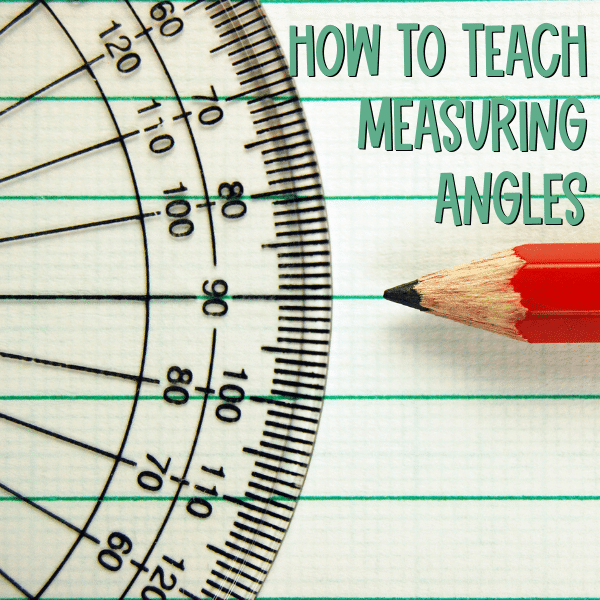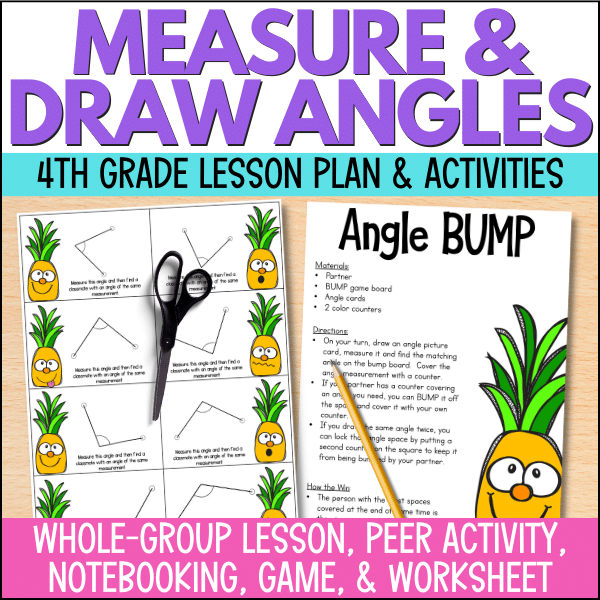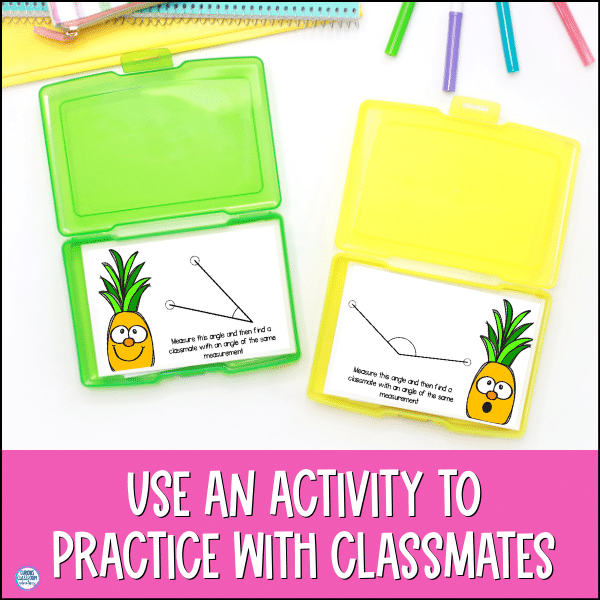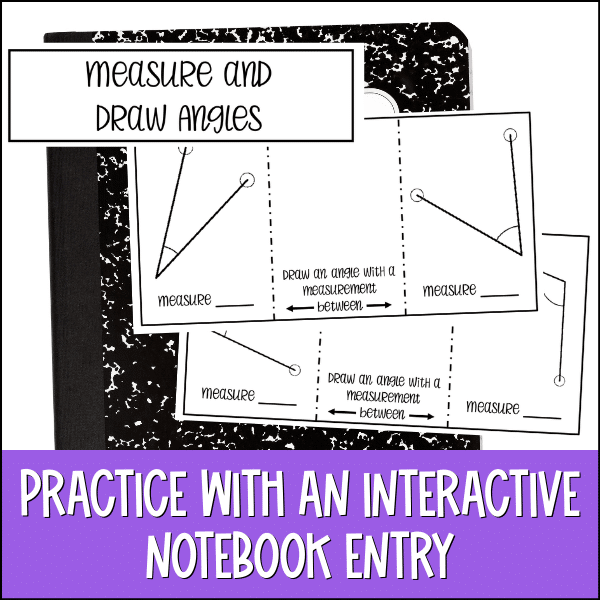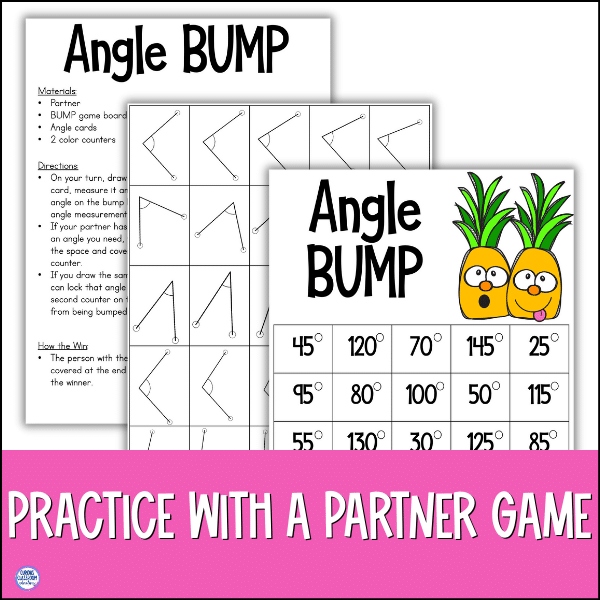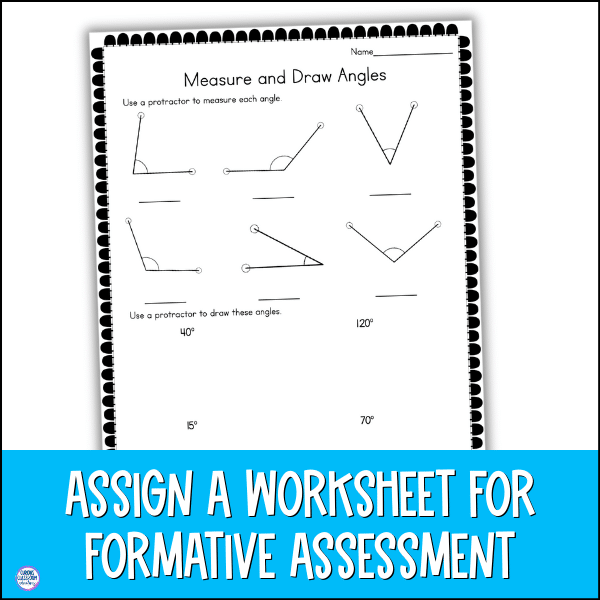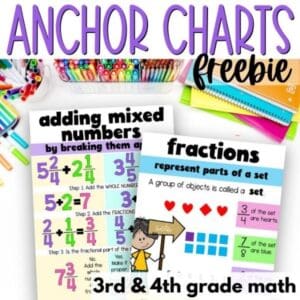Ah, the protractor! That trusty tool in the math toolkit that can sometimes leave students (and maybe even teachers!) scratching their heads. But no worries—we’re going to break it down so that measuring angles becomes second nature for your students!
This post will walk you through introducing the protractor, modeling how to measure and draw angles, and some fun activities to help your students practice using it. I’m going to be using this done-for-you lesson plan. Ready? Let’s angle right into it!
Step 1: Introducing the Protractor
First things first, let’s show students how to actually use this funky half-circle tool. Introduce the protractor by holding it up for all to see and explaining the basic parts.
- Line up the hole in the middle of the straight edge with the vertex (the point where the two rays of an angle meet).
- Show students how to line up the straight edge of the protractor with one side of the angle.
Once you’ve got the protractor lined up properly, it’s time to start measuring angles!
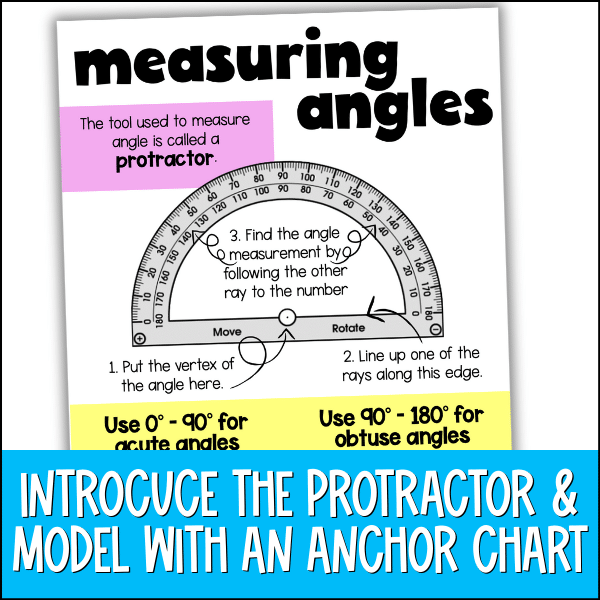
Step 2: Inner and Outer Numbers (What’s Going on Here?!)
Here’s where students might start to get confused. The protractor has two sets of numbers—an inner ring and an outer ring. Help your students notice this right away.
- Explain that you’ll use the inner numbers when the angle opens to the right.
- Use the outer numbers when the angle opens to the left.
Pro tip: Ask your students whether the angle is acute or obtuse before they measure. This will give them a clue as to whether they should expect a number smaller than 90° or greater than 90°! Once they get the hang of it, you’ll see their confidence soar.
You can grab a copy of the anchor chart above inside this lesson plan resource.
Step 3: Let’s Model It Together!
Start by modeling a few examples on the board. Draw a few angles, and walk students through how to measure them step by step. You can use phrases like:
- “I’ll start by lining up the hole of the protractor with the vertex of the angle.”
- “Now I’m lining up the bottom edge of the protractor with one of the rays.”
- “Since the angle is opening to the right, I’ll use the inner numbers.”
- “This angle is acute, so it must be less than 90°—look! It measures 45°.”
After modeling a few angles, have your students practice along with you. This way, they’re actively engaged in the process and will have their own lightbulb moments as they measure angles on their own papers.
Step 4: Practice Makes Perfect with These Fun Activities!
Once your students are feeling confident in using the protractor, it’s time for some hands-on fun to reinforce their skills. Here are a few engaging activities to make measuring angles as enjoyable as possible. You can find everything you need for these measuring angles activities in this done for you lesson plan.
Activity 1: Measure and Meet
Who says math can’t be social? In this activity, each student gets a card with an angle drawn on it. Here’s what to do:
- Step 1: Students measure the angle on their card using their protractors.
- Step 2: Then, they walk around the classroom and find a classmate with a card that has an angle of the same measurement.
- Step 3: Once all students are paired up, give a signal to have them trade cards with another student three times.
- Step 4: Students then find a new partner with the matching angle.
This game is great because it gets students moving and talking, and they’ll be measuring angles over and over without even realizing it!
Activity 2: Angle Measurement Trifolds
For a more creative approach, have your students work on drawing and measuring angles with an measurement trifold. Here’s how it works:
- Step 1: Students cut out and fold their trifold pieces.
- Step 2: On the outside sections of the trifold, they’ll use their protractors to measure the angles and record the measurements.
- Step 3: On the inside middle section, they’ll draw their own angle that falls in between the two outer angles.
This hands-on activity not only reinforces measuring angles, but also challenges students to get creative by drawing their own angles. And who doesn’t love a good craft project in math class?
Activity 3: Angle Bump
Time for a measuring angles game that’s sure to get competitive! Here’s how to play Angle Bump:
- Step 1: Students draw an angle picture card and use their protractor to measure it.
- Step 2: They then find the matching measurement on the bump board and cover it with a counter.
- Step 3: If their partner already has a counter covering the angle they need, they can BUMP it off the space and replace it with their own counter.
- Step 4: If a student draws the same angle twice, they can lock that space by putting a second counter on it to secure the spot, meaning it can’t be bumped by their partner.
This game keeps students engaged and lets them practice measuring angles without it feeling repetitive. Plus, who doesn’t love bumping their partner’s counters off the board? Talk about a math-fueled victory!
Step 5: Assign Extra Practice
Finally, once students have gotten the hang of measuring angles with their protractors, you can assign them some independent practice or do a formative assessent. Be sure to include problems where they measure given angles, and mix in opportunities for them to draw angles with specific measurements.
Challenge them to draw angles of different types—acute, right, and obtuse—and make sure they get plenty of practice using their protractors to draw and measure correctly.
You’ll also want to grab this FREE math rubric that is sure to reduce your grading time for measuring angles to only what’s absolutely necessary!
Protractors + Practice = Success!
Measuring angles seems less intimidating when you break it down with some hands-on practice and engaging activities. By teaching students to use a protractor to line up the vertex and measure carefully, and giving them fun ways to apply what they’ve learned, you’ll see those “aha” moments happen left and right!
Now, download your own done-for-you copy of this lesson and watch your students start measuring angles with their protractors. Or level up your lesson planning the whole 4th grade angles unit.
Get 4 Free Resources Every Month!
You read that right! I’ll share an easy-to-use and engaging upper elementary resource straight to your inbox every week along with a fabulous classroom idea or two to make teaching a little less work and a lot more fun!
Here’s the first freebie to get you started!
CLICK HERE TO GRAB YOUR FIRST FREE RESOURCE TODAY!

